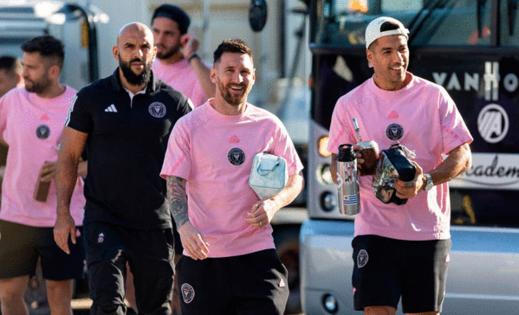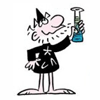Here's the backstory behind yerba mate, the drink that fuels Messi and Inter Miami
Published in Soccer
The Inter Miami team bus pulls up to Chase Stadium on game day as fervent fans snap photos from behind a parking lot gate. One by one the pink-clad players file out and begin making the short trek to the locker room. Many of them are toting something you do not see in the hands of athletes from the NFL, NBA, NHL, or Major League Baseball.
It is a brown cup made of a hollowed calabash gourd. Sometimes the cup is made of metal, ceramic or wood, but the gourd is most popular. Most players have their cup (and an accompanying thermos) personalized with their initials, jersey numbers, names of their spouses and/or children, and logos of their favorite soccer clubs. Sticking out of the cup is a metal straw called a bombilla with a flat bulb-like strainer at the end.
Inside the cup is yerba mate, or just mate (pronounced mah-teh) for short, a bitter, caffeine-rich herbal drink made of the dried leaves and stems of the yerba plant. The term yerba mate is derived from the Spanish word hierba, which means grass or herb, and the indigenous Quechuan word mati, which means drinking container.
It has been consumed for centuries in South America, is the national beverage of Argentina and Uruguay, and is also popular in Brazil and Paraguay, which explains why so many of the world’s best soccer players, including Lionel Messi and Luis Suarez, don’t leave home without it.
The Argentine national team travels with large quantities of it. So does the Uruguayan national team. And Inter Miami does, too.
According to team nutritionist Daniela Lara, Inter Miami staff packed 25 pounds of yerba mate when the team traveled to Saudi Arabia, Hong Kong and Japan during the preseason. For a typical regular season road game, they bring along several bags of yerba mate, spare kettles, and straws.
“Many players bring their own, but we always travel with a few different brands of yerba, some are more bitter, some are less bitter, as the players have different tastes,” Lara said. “I would say at least half the team drinks mate, partly because the caffeine is a stimulant like coffee, so it wakes them up and makes them more alert and less fatigued, but also for its nutritional values and because it helps teammates bond before and after practice and games.”
Messi is one of six Argentine players on the Inter Miami roster. Coach Tata Martino and nearly his entire staff is from Argentina. Two players are Argentine American. Suarez is from Uruguay and Diego Gomez is from Paraguay, so they, too, are immersed in the mate culture.
“I started drinking it when I was young, and even more when I became a professional soccer player because in our culture, we prepare and share mate with our teammates as a way to go through good and bad times together,” said Argentine left back Franco Negri. “It’s been a fundamental part of every locker room I’ve played in. It brings us closer together.”
Midfielder Benjamin Cremaschi grew up in Key Biscayne but is from Argentine background and has been drinking mate for as long as he can remember. He travels with it when on road trips with Inter Miami and the U.S. national team.
...continued
©2024 Miami Herald. Visit miamiherald.com. Distributed by Tribune Content Agency, LLC.







Comments